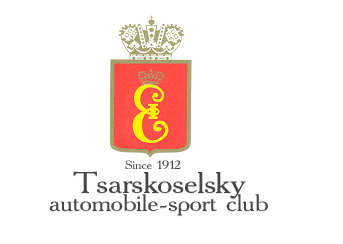About the Club
The cities of St. Petersburg and Tsarskoe Selo (Pushkin) – are the birthplace of Russian motoring and automobile sports. This historic foundation creates here the premise for the revival of forgotten traditions and for the development of activities in this direction.
On 11th October (23rd New Style), 1898 on the Vohonsky Shosse (Highway) between the Alexandrovsky and Strelna railway stations, the very first "motorcar races" were conducted in Russia. Here on Volhonky until 1914 on a regular basis, record heats of 1 verst (1.0668 km) were conducted.
In Tsarskoe Selo from 1907 the very first international races started and finished, from 1909 – were the first automobile races similar to a rally. On 26th May, 1913, the first Russian circuit auto races were conducted in this region (in 2003 – after 90 years!).
In Tsarskoe Selo during 1907-1908, a complex of three building was constructed for the Imperial crew and automobiles, which received the name "White Garage".
In 1912 the Tsarskoselskii Automobile-Sports Society was established. After 90 years in November 2002, the revived Tsarskoselskii Automobile-Sports Club was registered, which had inherited the long forgotten pioneers of motoring and auto sport, has commenced its own activity by conducting the St. Petersburg and Leningrad regional Championship on the motorcycle cross in January 2002.
In the plans of the Tsarskoselskii Automobile-Sports Club is the revival of automobile races of the former Russian capital – by tradition to conduct the Verstovie races on Volhonka, international auto runs (rallies), circuit auto races, and to create the National Automobile Museum and much more.
Just as Andrei Platonovich Nagel – the editor and publisher of the first Russian specialized journal "Automobile" (1902-1917), wrote at the beginning of 1903: "As every one of us knows, clubs and societies, including sports’ clubs, can be of two kinds – active or inactive."
In order for the created Club to become active and be recognized among numerous other auto clubs in the country and abroad, it is essential first of all, to formulate top level teams of circuit racers, rally drivers, go-cart racing and cycle sports (in the beginning 1-2 teams) and immediately take part in All-Russian competitions and on an international scale. For this purpose young talented sportsmen and skilled trainers who may be attracted to this, and for financial security – sponsors, advertisers and patrons may become involved.
Equally alongside elitism, within the club there should be a massive amount of work. Such a large public resonance may provide for the organization and the conduct of the "Historic Verstoviye Races" on the Volhonsky Shosse (Highway) (by modern definition "drag-racing") with the participation of all willing auto enthusiasts. A school for high driving skill might be organized similar to learner driver courses and include leisure pastimes for children and teenagers (e.g. age-graded cycling and go-carting, model cars, motorcycle sports and other).
On the grounds of the former Imperial garages it is anticipated that the National Automobile Museum "White Garage" will be created, which shall occupy a premier position made available for native automotive racing.
Presently there are many automobile curiosities, and models of automobiles and replicas used by the Lenfilm cinematography unit in private hands. All these items with the necessary preparations may be used as displays by the Automobile Museum. An important aspect of the museum’s activity is funding and primarily is its archival nature. Yuri Alexandrovich Melentyev’s personal archives on automotive and sporting themes contain over 50 thousand documents, many of which are unique, may form the basis of these archives. He collected and classified them, and studied the material for more than 20 years. This "concentration of human intelligence" allows him to be guided by its organization and place into effect various measures related to auto-motorcycle sport and creates an informative basis for writing his books.
Attached to the agreement of conditions, these archives together with the provided grounds, and also with his exhibition "A Century of Motoring in Russia" which repeatedly received success in Saint Petersburg and Moscow, may be transferred for ownership to the created museum and be subsequently enlarged. Such an approach will considerably raise the status of the Tsarskoe Selo museum as a solid instructive institution and will strengthen its position among other similar organizations in our country and abroad.
Summarizing everything that has been stated and taking into account the former glory of our ancestors, we believe that on the threshold of the 300th Anniversary of Tsarskoe Selo the opening of the National Automobile Museum will be a worthy gift to our beloved city from the Tsarskoe Selo Automobile-Sports Club.


